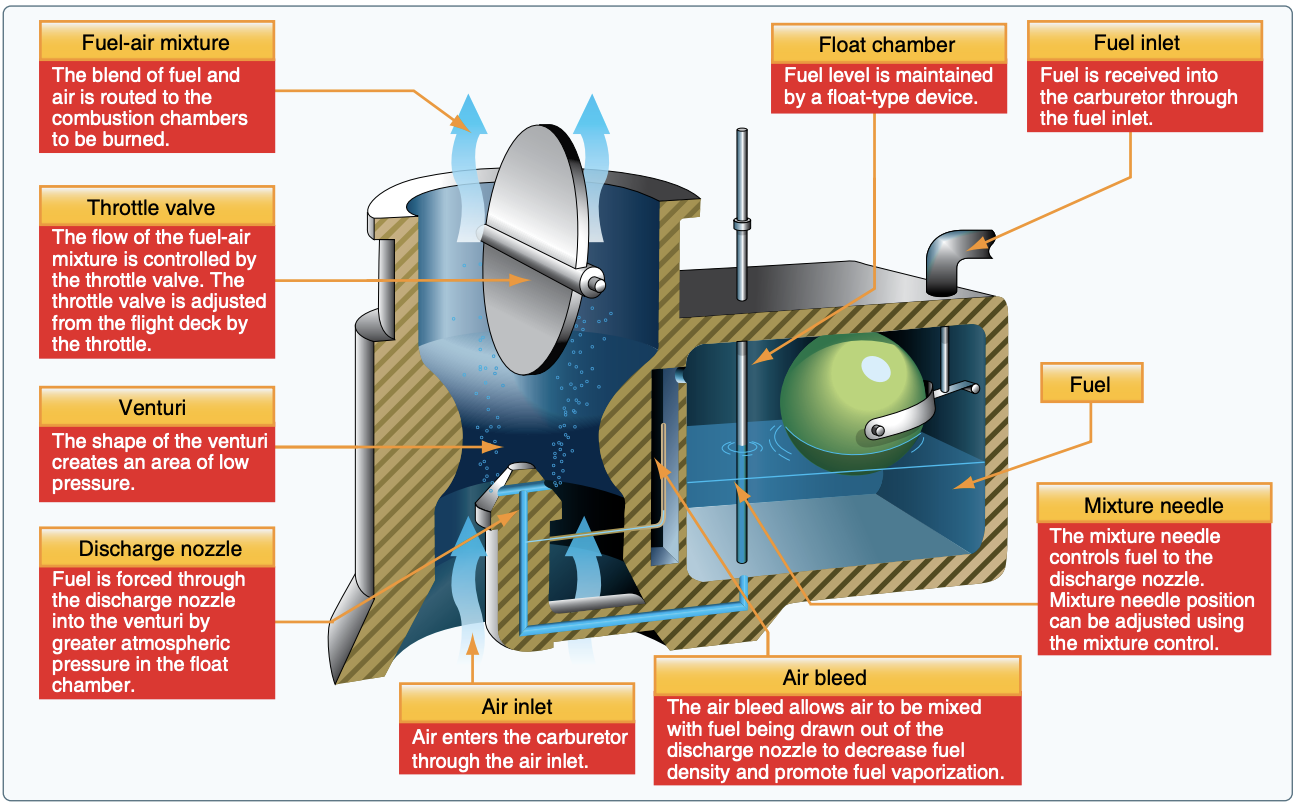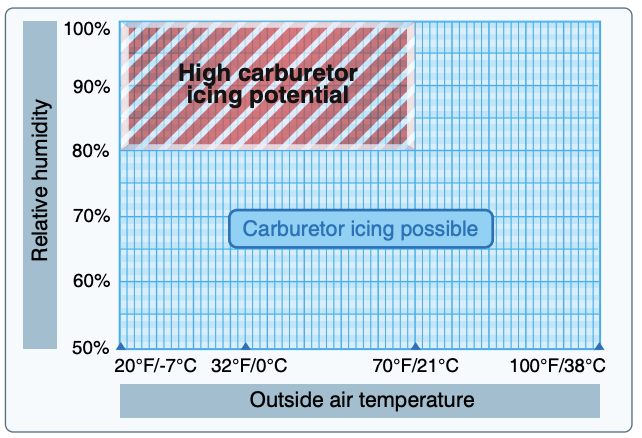How It Got Its Name:
In the first place, from where does that word come from? It actually comes from the French word “carbure” meaning “carbide.” Carbide means to combine with carbon. In fuel chemistry, the term has the more specific meaning of increasing the carbon (and therefore energy) content of a fluid by mixing it with a volatile hydrocarbon. Understanding these basics is essential for anyone pursuing flying lessons or aiming to obtain any type of pilot certification.

How would you describe the carburetor built in a Cessna 172? Well, it is an updraft, float-type, fixed jet carburetor… and what is the meaning of those fancy words? Well… Updraft because of the updraft position of the carburetor and because the mixture rises (typically, carburetors are placed on the top of engines, and fuel is fed below, opposite of what we have on our airplanes). Float-type because of the floating device it has to maintain a safe amount of fuel inside the carburetor and fixed jet because of the jet that vaporizes the fuel.
If the floating device goes down past a preset, it pulls a tiny inlet which draws fuel from the tanks, so the carburetor does not run out of fuel. This understanding is crucial for those considering aviation lessons or aspiring to earn any type of pilot certification.
How is fuel drawn into the Venturi of a carburetor? The fuel is drawn into the carburetor by the vacuum created on the downstroke of the piston. As air accelerates through the Venturi, it creates a low-pressure area, and the velocity of the intake air increases. This rapid acceleration causes the air and fuel to mix and vaporize. Such knowledge is fundamental for students at flight schools or those enrolled in aviation programs.
Accelerator Pump
The accelerator pump is responsible for providing the momentary additional fuel needed under heavy acceleration conditions. When the throttle is suddenly pushed to apply full power, the throttle valve will suddenly open, immediately adding additional air for additional power. That additional air requires additional fuel, especially in the precise moments after the throttle is opened; this is the fuel the accelerator pump provides. When the throttle is rapidly opened, the accelerator pump will squirt a small amount of fuel into the throat of the carburetor so that the engine can continue running smoothly under increased load.
Pumping the throttle three times prior to starting, a common practice in carbureted engines, aids in starting because we are squirting gas right into the induction system with the accelerator pump. This technique is often covered in aircraft certification training at aviation programs.
Carb Ice
 Why do we select carb heat on whenever we leave the green arc? Because the throttle valve is close to a point in which the velocity of the mixture is increased, but
Why do we select carb heat on whenever we leave the green arc? Because the throttle valve is close to a point in which the velocity of the mixture is increased, but  with this, the temperature is decreased (Bernoulli's principle). Depending on ambient temperature and relative humidity, there is an opportunity for carburetor ice to form (reference chart below). Some aircraft, like the Cessna 182, have a Carburetor Air Temperature Gauge that allows monitoring of carburetor temperature and gives the pilot the option to use partial carb heat, resulting in less power loss.
with this, the temperature is decreased (Bernoulli's principle). Depending on ambient temperature and relative humidity, there is an opportunity for carburetor ice to form (reference chart below). Some aircraft, like the Cessna 182, have a Carburetor Air Temperature Gauge that allows monitoring of carburetor temperature and gives the pilot the option to use partial carb heat, resulting in less power loss.
Partial use of carb heat without a Carburetor Temperature Gauge can cause carburetor ice. This can occur when ice that would ordinarily pass through the induction system is melted by partial carburetor heat, and the water droplets refreeze upon contact with the cold metal of the throttle plate.
When you turn carb heat on, the ice in your carburetor will start melting, and it will be ingested by the engine. The fuel-to-air mixture is enriched due to the decrease in air molecules (hot air). It will sound bad (or terrible), but keep your carb heat on. Eventually, the ice will melt, and you will be back to normal operation.


.png?width=178&height=50&name=Aviator%20Zone%20Academy%20(5).png)
Submit a Comment